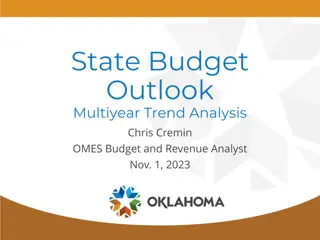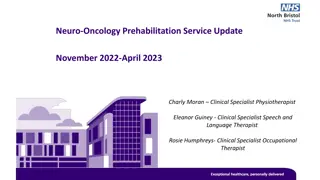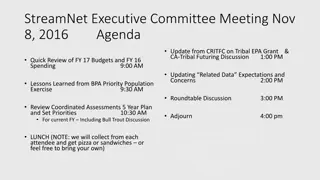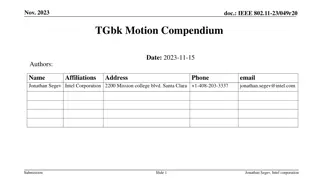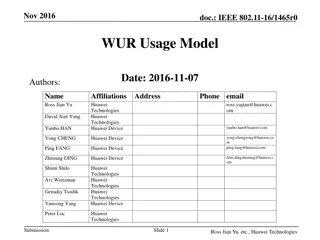
Natural Hazard Disclosure Dilemma for Property Sales
Explore the ethical and legal issues surrounding the disclosure of natural hazard risks to potential property buyers, including considerations of liability, duty of care, and conflicting responsibilities under the law. Should property owners disclose information about flood zones, coastal erosion risks, fire-prone areas, or past dangerous land use to buyers? Understand the implications of releasing hazard information on property values and the concept of pure economic loss in negligence cases.
Download Presentation

Please find below an Image/Link to download the presentation.
The content on the website is provided AS IS for your information and personal use only. It may not be sold, licensed, or shared on other websites without obtaining consent from the author. If you encounter any issues during the download, it is possible that the publisher has removed the file from their server.
You are allowed to download the files provided on this website for personal or commercial use, subject to the condition that they are used lawfully. All files are the property of their respective owners.
The content on the website is provided AS IS for your information and personal use only. It may not be sold, licensed, or shared on other websites without obtaining consent from the author.
E N D
Presentation Transcript
Natural hazard risk to disclose or not do disclose that is the question? Dr Michael Eburn ANU College of Law CANBERRA
This presentation will consider Can councils be liable for releasing, or not releasing, hazard information?
Consider Blackacre It falls within a revised 1:100 flood zone. The owner wants to sell it. What if it s in an area expected to be affected by coastal erosion? Fire prone? On a land site that was used for a dangerous industry? Do you tell the potential buyer? Why, or why not? What s the concern?
If you release a flood map and property values fall Duty of care Breach Damage
Duty of care The damage is pure economic loss there s no damage to the property, no change in the environment
Woolcock Street Investments Pty Ltd v CDG Pty Ltd (2004) 216 CLR 515 damages for pure economic loss are not recoverable if all that is shown is that the defendant's negligence was a cause of the loss and the loss was reasonably foreseeable ([21], Gleeson CJ, Gummow, Hayne And Heydon JJ).
Even if there is a duty, wheres the breach? A duty of care can t be inconsistent with a statute. Even if there is a duty of care, the law only requires reasonable care not A guarantee of no harm. What is reasonable depends on many factors, including conflicting responsibilities Wyong Shire v Shirt (1980) 146 CLR 40 ([14], Mason CJ) See also Civil Liability Act 2002 (WA) s 5B.
Other conflicting responsibilities Planning and Development Act 2005 (WA) s 69 (General object of local planning schemes) and Schedule 7 ( Matters which may be dealt with by planning scheme ). s 165 ( Hazard etc. affecting land, notating titles as to ). Planning and Development (Local Planning Schemes) Regulations 2015 (WA) r 67 Matters to be considered by local government
Planning and Development Act 2005 (WA) s 165 & Transfer of Lands Act 1893 (WA) s 70A. 1) when the Commission/Local Government considers it desirable that owners or prospective owners of land be made aware of hazards or other factors seriously affecting the use or enjoyment of that land and determines that the title and land register in respect of that land should be noted accordingly. 2) the Commission/Local Government may cause a notification of the hazard to be prepared 3) Where a notification is deposited the Registrar of Titles is to endorse or note the title with that notification.
But what to say? Bushfires draft SPP 3.7 The decision-maker may impose conditions including notifications on title The Bush Fire Guidelines BMPs are often a condition requiring that a notification be placed on title SPP 2.6 provide the following notification on the certificate on title: VULNERABLE COASTAL AREA This lot is located in an area likely to be subject to coastal erosion and/or inundation over the next 100 years.
Avoid purchasers economic losses No duty to protect value for current owners, but what of future owners? Purchasers make application to councils for information regarding the property. A duty can arise in those circumstances
Mutual Life v Evatt (1968) 12 CLR 556 [W]henever a person gives information or advice to another upon a serious matter and the relationship of the parties is such that the speaker realizes or ought to realize that he is being trusted to give the best of his information or advice as a basis for action on the part of the other party and it is reasonable in the circumstances for the other party to seek or accept advice the speaker comes under a duty of care to exercise reasonable care in the expression of what he is prepared to convey by way of information or advice ([32], Barwick CJ).
Mutual Life v Evatt (1968) 12 CLR 556 [W]henever a person gives information or advice to another upon a serious matter and the relationship of the parties is such that the speaker realizes or ought to realize that he is being trusted to give the best of his information or advice as a basis for action on the part of the other party and it is reasonable in the circumstances for the other party to seek or accept advice the speaker comes under a duty of care to exercise reasonable care in the expression of what he is prepared to convey by way of information or advice ([32], Barwick CJ).
Mutual Life v Evatt (1968) 12 CLR 556 [W]henever a person gives information or advice to another upon a serious matter and the relationship of the parties is such that the speaker realizes or ought to realize that he is being trusted to give the best of his information or advice as a basis for action on the part of the other party and it is reasonable in the circumstances for the other party to seek or accept advice the speaker comes under a duty of care to exercise reasonable care in the expression of what he is prepared to convey by way of information or advice ([32], Barwick CJ).
Mutual Life v Evatt (1968) 12 CLR 556 [W]henever a person gives information or advice to another upon a serious matter and the relationship of the parties is such that the speaker realizes or ought to realize that he is being trusted to give the best of his information or advice as a basis for action on the part of the other party and it is reasonable in the circumstances for the other party to seek or accept advice the speaker comes under a duty of care to exercise reasonable care in the expression of what he is prepared to convey by way of information or advice ([32], Barwick CJ).
Mutual Life v Evatt (1968) 12 CLR 556 [W]henever a person gives information or advice to another upon a serious matter and the relationship of the parties is such that the speaker realizes or ought to realize that he is being trusted to give the best of his information or advice as a basis for action on the part of the other party and it is reasonable in the circumstances for the other party to seek or accept advice the speaker comes under a duty of care to exercise reasonable care in the expression of what he is prepared to convey by way of information or advice ([32], Barwick CJ).
Mutual Life v Evatt (1968) 12 CLR 556 [W]henever a person gives information or advice to another upon a serious matter and the relationship of the parties is such that the speaker realizes or ought to realize that he is being trusted to give the best of his information or advice as a basis for action on the part of the other party and it is reasonable in the circumstances for the other party to seek or accept advice the speaker comes under a duty of care to exercise reasonable care in the expression of what he is prepared to convey by way of information or advice ([32], Barwick CJ).
Mutual Life v Evatt (1968) 12 CLR 556 [W]henever a person gives information or advice to another upon a serious matter and the relationship of the parties is such that the speaker realizes or ought to realize that he is being trusted to give the best of his information or advice as a basis for action on the part of the other party and it is reasonable in the circumstances for the other party to seek or accept advice the speaker comes under a duty of care to exercise reasonable care in the expression of what he is prepared to convey by way of information or advice ([32], Barwick CJ).
Examples Liability where councils have released appropriate hazard information There are none.
Liability for disclosing accurate, but misleading information Port Stephens v Booth and Gibson [2005] NSWCA 323. The relevant issue was the Airport Noise Exposure Forecast or ANEF .
ANEF 20 ANEF 25 ANEF 30 Council s records indicate that the land is contained within the Australian Noise Exposure Forecast (ANEF) 20 contour and consequently may be subject to noise exposure from aircraft
Giles JA at [114]: The Council submitted that the s 149 certificates were technically correct that a property between the 25 and 30 contours was necessarily within the 20 contour. The peak of Mount Everest is within the sea level contour. It was materially misleading to convey that the land was within the 20 contour and consequently may be subject to noise exposure from aircraft, when the true position was that the land was between the 25 and 30 contours and subject to a higher degree of forecast noise exposure
Giles JA at [114]: The Council submitted that the s 149 certificates were technically correct that a property between the 25 and 30 contours was necessarily within the 20 contour. The peak of Mount Everest is within the sea level contour. It was materially misleading to convey that the land was within the 20 contour and consequently may be subject to noise exposure from aircraft, when the true position was that the land was between the 25 and 30 contours and subject to a higher degree of forecast noise exposure
Giles JA at [114]: The Council submitted that the s 149 certificates were technically correct that a property between the 25 and 30 contours was necessarily within the 20 contour. The peak of Mount Everest is within the sea level contour. It was materially misleading to convey that the land was within the 20 contour and consequently may be subject to noise exposure from aircraft, when the true position was that the land was between the 25 and 30 contours and subject to a higher degree of forecast noise exposure
Giles JA at [114]: The Council submitted that the s 149 certificates were technically correct that a property between the 25 and 30 contours was necessarily within the 20 contour. The peak of Mount Everest is within the sea level contour. It was materially misleading to convey that the land was within the 20 contour and consequently may be subject to noise exposure from aircraft, when the true position was that the land was between the 25 and 30 contours and subject to a higher degree of forecast noise exposure
Inaccurate information not looking to what council actually knew
Mid Density Developments Pty Ltd v Rockdale Municipal Council [1993] FCA 408. Q: "Has the Council information which would indicate that the land is subject to the risk of flooding or tidal inundation?" A: No. The above information has been taken from the Council's records but Council cannot accept any responsibility for any omission or inaccuracy."
The council employee said that when he completed the answers to the certificates in question in this litigation, he referred to no files or other compendia of data. He relied upon his general knowledge. This led him to the firm conclusion that no property in Henderson Street was subject to flooding.
Armidale City Council v Finlayson [1999] FCA 330 [27] To the Council's knowledge, pockets of contamination were randomly located on the land and were hidden under a deceptive gravel surface. So far as the Council knew, the applicants for residential subdivision development approval were unaware of the contamination risk. The Council could not have thought that purchasers of the land would have thought that there was a contamination problem, or would have had the means, or even the idea, of obtaining expensive technical analyses of the land. The Council knew that the use of the land for residential purposes had the potential to cause serious harm to the occupiers of the land. The Council had a statutory obligation to consider whether the land was suitable for residential subdivision, regard being had to risks such as contamination. the Council had only to look to the information in its own records and to the specific knowledge of its officers in order to appreciate that it could not conclude that the land was suitable for residential subdivision.
Other examples a house which began to collapse due to slippage after being built where required by the Council on land known by the Council to be prone to slippage (Wollongong City Council v Fregnan [1982] 1 NSWLR 244); [a] house later became uninhabitable due to movement of earth and rock (Bamford v Albert Shire Council [1998] 2 Qd R 125) Dansar Pty Ltd v Byron Shire Council [2013] NSWSC 17, [50] (McCallum J)
What if you dont believe the information? A problem for Brisbane City Council? Brisbane river flood levels: A CMC report on the Brisbane City Council s handling of flood study reports (March 2004).
The Courier Mail Reported that one landowner had: paid top dollar -- more than $500,000 -- for a stately Queenslander -- in total ignorance of the projected flood levels. She may not have bought in Chelmer 14 months ago had she known about it. "I think it could have influenced my decision. "I think the report could have put me off buying here without a doubt. "We will be selling by the end of the year.
Good faith defence ... Good faith is not a defence unless a statute says it is. There is no significant good faith defence in either the Planning and Development Act 2005 (WA) (but cf s 267) or the Local Government Act 1995 (WA) (but cf ss 8.10 and 9.56). Compare Local Government Act 1993 (NSW) ss 731 and 733.
Good Practice In order to build resilient communities it is vital that communities are made aware of the risks that they face. Where Councils make decisions in the hope of avoiding litigation they are likely to be over-cautious and allow property developers to achieve greater rights than strictly allowed by law.
Conclusion The risk of releasing reasonably accurate hazard information in a planned way is less than the risk of deliberately withholding it. Councils need to make information available in a careful way, with due consideration of how the information will be used and by whom. Develop a policy that explains how they will deal with requests for hazard information and then apply that policy.
Questions? See you again shortly, for Part 2!


